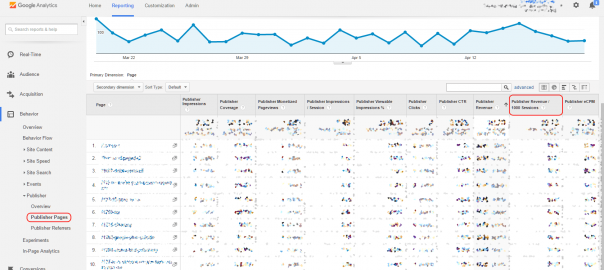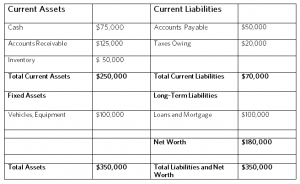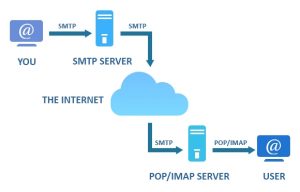You created some truly epic content and drove truckloads of quality traffic to your website. It makes sense to want to make the most money from every click and avoid low-priced ads. So don’t say we never did anything for you. Here’s a complete guide to cutting out those low-CPC ads from your inventory.
You’re right, we’ve written extensively about what you can do to get higher-CPC ads to appear alongside your content. From advanced hacks to raise your CPCs to keyword research tools to help you find the highest paying topics and keywords.
This time, we want to flip the script and take a to – down look at it or is it actually bottom – up?!

There’s no shortage of “top paying keywords” lists on the net. They’re a dime a dozen. But instead of trying to raise CPCs to average out higher, we’re going to see how we can elegantly avoid cheap paying ads.
Another thing you can find online are lists of supposedly low-paying advertisers you can import into your AdSense account and block from advertising on your site. Though this may seem tempting at first, it’s not the best solution.
It’s hard to maintain, and Google penalizes you for kicking advertisers out of the auction for your inventory. Fewer bidders mean lower CPCs.
Our recommendation is to avoid this time-consuming method of cutting out low paying ads and to focus on what we as publishers know best: quality content.
Growing Revenues in a Changing World
Digital advertising would be pretty chaotic if it weren’t for it being…well…digital. Ad space gets bought and sold in a kind of marketplace where the highest bidder wins and this all happens in the fraction of a second. Nothing new here.
CPCs are not determined by a simplistic equation of supply and demand. Among the factors influencing the CPC is competition for the attention of specific users (retargeting), ad quality according to Google, different pricing for ads on different devices, the season, user location, traffic source, weather, and what you had for lunch (the last two are a joke, we think).
Some of these variables you can influence. For example, you can block retargeting ads, attract traffic from better paying regions and countries, cater to the need or mobile advertisers and more.
But you can’t change the maximum bids advertisers place on keywords when targeting publishers’ online properties on the display network. What you can do, is try to avoid the keywords, phrases, and topics that might attract low-paying CPCs.
What do we do to a low CPC topics? We…

Is it the content niche?
Yes and no. Different types of content attract different types of audiences. For example, a website with wanted ads will attract unemployed people who are less likely to make a purchase from an advertiser. A website with content aimed at children is also not likely to get high CPCs due to accidental clicks and again – the audience can’t buy. So the advertisers won’t pay for it.
So how do these websites monetize with display ads, you wonder? Good question. For the most part, they go for quantity rather than quality and settle for lots of clicks with low CPCs. Besides, there are always advertisers for every niche. True, some niches are more competitive than others and have higher CPCs, but that doesn’t mean you can’t make a nice buck running a blog in a supposedly “cheap” niche.
Having said that, if you do suspect that your blog niche of choice is the source of your overall diminishing revenues, you might want to think about re-defining it.
Another thing to remember is that some niches are seasonal or event-oriented. For example, political blogs are likely to get higher CPCs on an election year when politicians have the budget to invest in ads. Websites about swimsuit fashion will see higher CPCs (and more traffic and overall revenues) in the spring and summer.
Thinking like an advertiser
Advertisers run different types of campaigns with different goals. The campaigns you usually want to avoid are brand awareness campaigns. These are usually priced dirt-cheap as the clicks don’t matter much.
With these campaigns, the advertiser is mostly just looking to get eyeballs on their logo. The real money is with ads that lead to a sale, and those are advertisers we want. But let’s think a moment about what THEY want and what they try to avoid (to make sure we’re not in the category of things they wish to avoid).
We’ve already discussed how it’s not niches as much as audiences that affect CPCs on AdSense. So obviously advertisers trying to sell a product (and are willing to pay for good leads) will want to stay away from online properties where the majority of the clicks they get don’t turn into leads. Simple math, really.
So what do smart advertisers do? They analyze their AdWords reports to see which websites bring in the conversions for the lowest cost. Those they keep. And then they search for the ones that cost them without bringing in conversions, usually by keyword, and block those sites. There are even lists of such keywords to search when optimizing AdWords Display Network campaigns.
Now, this doesn’t mean that including the words “free” or “sports” in your posts will bring low CPCs. Very few advertisers are stupid enough to block these keywords at the campaign level.
However, if you have a “Free Daily Game Download” blog, it’s likely that advertisers of expensive products (like loans, lawyers and luxury items) won’t see that many conversions from you no matter how hard you try. And they will block you. So you’ll need to find a way to work around that.

But of course!
Getting Down to Business – Optimizing for High AdSense CPCs
Unfortunately, there’s no way to check which keywords trigger specific ads to appear on your website, or how much they contribute to the bottom line. But if you have some time to invest (and it’s really worth it), you should go exploring your website’s keyword reports so you can cut those cheap ads out.
So load up your Google Webmaster tools search console and Google Analytics and let’s take a close look at your leading keywords. This is a good time to prepare a spreadsheet, much like the one you may have created when we told you all about high-CPC keyword targeting.
1. Analyzing Low-Revenue Pages With Google Analytics
Let’s start with Google Analytics. Assuming you’ve connected your AdSense and Analytics accounts, you should be able to see your revenues per-page in the publisher reports under behavior in Analytics.

Grab a chunk of time like 3 or 6 months (depending on your publishing rate) and sort the pages by publisher revenue. Look for the pages with low publisher revenue per 1,000 sessions. If you have a lot of pages, you can export this report and play around with it in your favorite spreadsheet app.
Depending on the variety of topics in your blog, you’ll now need to pick your worst performing pages to analyze. Yeah, we know how hard it is to look at your babies and say: “You’re just not good enough.” But it’s no Sophie’s Choice so let’s do it anyway.
Once you have a list of URLs, check the leading keywords on that page using SEO Book’s wonderfully useful keyword density analyzer. Obviously, the most prominent keywords will be the ones Google uses for contextual ads. Now copy the relevant keywords and phrases into the spreadsheet you’ve created.
Now that you have a list of keywords from badly performing pages, you can check their value in CPC. You can use Google’s AdWords Keyword Planner or tools like Keyword Spy or SEMRush.
Before we sort these and see what we do about them, we need to add and price another list of phrases: the ones we rank for on Google.
2. Analyzing High-Traffic Keywords with Google Webmaster Tools (aka Google Search Console)
Even if the majority of your traffic originates on social networks or direct links, it’s worth checking your keywords through the eyes of Google. We can see which keywords bring us traffic from Google’s search engine using the Search Console in the Webmaster Tools. These are keywords Google sees as relevant, so it’s very likely it’ll use them to generate the ads for the target pages.
Grab the most popular search terms that bring you traffic, and add them to the spreadsheet after you’ve checked their CPC values.

3. Testing through the sadness
This is the saddest spreadsheet you’ll ever work with. It’s okay to cry or get a stiff drink before you proceed.
Sort the keywords so that the lowest paying ones are on the top. What you don’t want to see here are duplicates – keywords that appear as popular in the Search Console (bring some traffic) AND bring in low CPCs (bring too little revenue). Draw a line at the lowest CPC you’re okay with having. This depends on your niche, locale and other variables. Don’t be too greedy.
Now that you have this list and your theoretical bottom price, it’s time to start testing. For example, if many of these keywords are related to gaming topics, you can run an experiment and block that ad category to see how it affects your overall RPMs. Get creative, but keep your eye on the reports as you go.
Obviously, you’ll need to reduce the appearance of those low-CPC terms, topics and keywords in your content. But that’s not always easy. What you can do, is use keyword tools to find better paying long-tail keywords that include cheap phrases you currently rank well for in search engines or mention a lot.
4. Testing with a smile
After some experimentation, you should see your revenues rise. But remember – this is a process and CPCs are not constants. Keep updating that spreadsheet, and working toward less of the cheap terms, and more of the profitable ones. And all this, while creating the awesome and engaging content you already do. You’ve got your work cut out for you.

So far, according to our research, the worst keywords are the ones that advertisers block. The smart advertisers know to separate between search targeting and display targeting and not block words that might appear on websites where they want to advertise. But those who do block, often use keyword lists they find online.
Another important factor is CPC variation between locales. It’s really hard to pinpoint “bad” keywords if your traffic comes from a variety locales (CPC for Australia and for the US is different, and it even varies between US states).
Content Consolidation – Your Key to Higher CPCs
If you’re looking for single takeaway from this blog post the it would be to consolidate your content. But be smart about it. Become a Google Analytics guru and analyze like mad to see which keywords on your pages attract low CPC ads thus lowering your RPMs for those pages. Then optimize, optimize, optimize and wait to see the results of your changes. Then lather, rinse, and most importantly – repeat.
Digital & Social Articles on Business 2 Community(119)
Report Post





